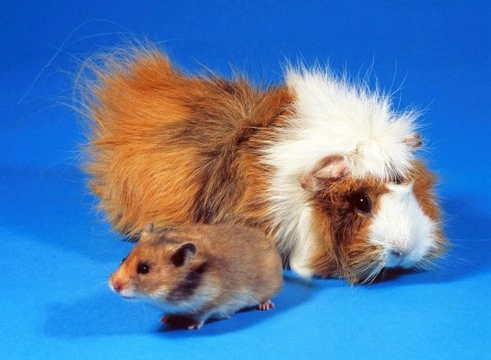
Hamster or Guinea Pig? Which Pet Suits You Best?
Many people consider guinea pigs and hamsters similar because they are small, active, and relatively easy to care for. However, understanding their key differences can help you choose the pet that best fits your family's lifestyle and care capacity.
The Challenge of Nocturnal Habits
Hamsters are predominantly nocturnal, becoming most active as the sun sets. They enjoy running on wheels and exploring their cage at night, which may sometimes disturb children's sleep. To manage this, place the hamster’s cage in a separate room during the night and only bring it to a family area during waking hours, encouraging interaction without disrupting sleep.
Guinea pigs, by contrast, are crepuscular, active in short bursts both day and night. Their frequent napping and activity patterns can also be disruptive if their cage is kept in a bedroom overnight. While some owners keep guinea pigs in outdoor hutches, it is safest and kinder to keep them indoors in a draft-free, sheltered area, contributing to longer lifespans and more bonding time.
Child-Friendliness and Handling
Hamsters' small size and quick movements make them seem ideal for children, but they require careful handling. Children under eight should be supervised, as hamsters can nip when startled or awoken suddenly. Their speed also makes them escape artists, needing gentle but firm grip skills younger children may not yet possess.
Guinea pigs are generally more tolerant and easier to handle, craving social interaction and often happy to be gently cuddled. However, like hamsters, rough handling can provoke defensive nips or scratches. Again, supervision is essential for younger children, and pet hygiene should be strictly observed.
Both animals can carry zoonotic diseases; thus, washing hands after handling is a crucial habit to protect everyone in the home, especially children with developing immune systems.
Characteristics and Daily Habits
Hamsters
Known as escape artists, hamsters require very secure cages with gnaw-proof bars and appropriately spaced gaps to prevent escapes. Their natural chewing behaviour helps maintain their constantly growing teeth, so cage accessories should be designed to withstand nibbling. Regular cage cleaning is vital to prevent harmful bacteria buildup and keep your pet healthy.
Guinea Pigs
Guinea pigs are less intent on escaping but still need a secure environment. They also chew to maintain dental health and benefit greatly from living in pairs or small same-sex groups to meet their strong social needs. When considering adopting, always plan for at least two guinea pigs to ensure their wellbeing.
Cage Size and Space Requirements
Hamsters
A solitary hamster requires a cage of at least 24 inches by 12 inches. If you have dwarf hamsters, they enjoy living in pairs from a young age, necessitating a slightly larger enclosure. Providing plenty of enrichment and exercise toys contributes enormously to their wellbeing.
Guinea Pigs
Being larger and more social, guinea pigs need a minimum of 7 ½ square feet (about 30 by 36 inches) of floor space per pair. The bigger the enclosure, the better for both exercise and social interaction.
Lifespan and Bonding Considerations
Hamsters usually have a shorter lifespan of around 2 ½ to 3 years depending on the species, which some children may find upsetting when their pet passes away unexpectedly.
Guinea pigs tend to live between 6 to 8 years when well cared for indoors, offering a longer companionship period for families and deeper bonds.
Conclusion
Hamsters are less demanding, usually cheaper to keep, and more suited to owners with limited space or less available time. They are suitable for independent pet lovers but require careful handling and awareness of their nocturnal habits.
Guinea pigs need more space and investment in their care but reward owners with their sociable nature and longer lifespans. They suit families wanting interactive pets that enjoy companionship and can bond closely.
Ultimately, choosing between these two delightful pets should align with your home environment, daily routine, and what kind of pet relationship you desire.



